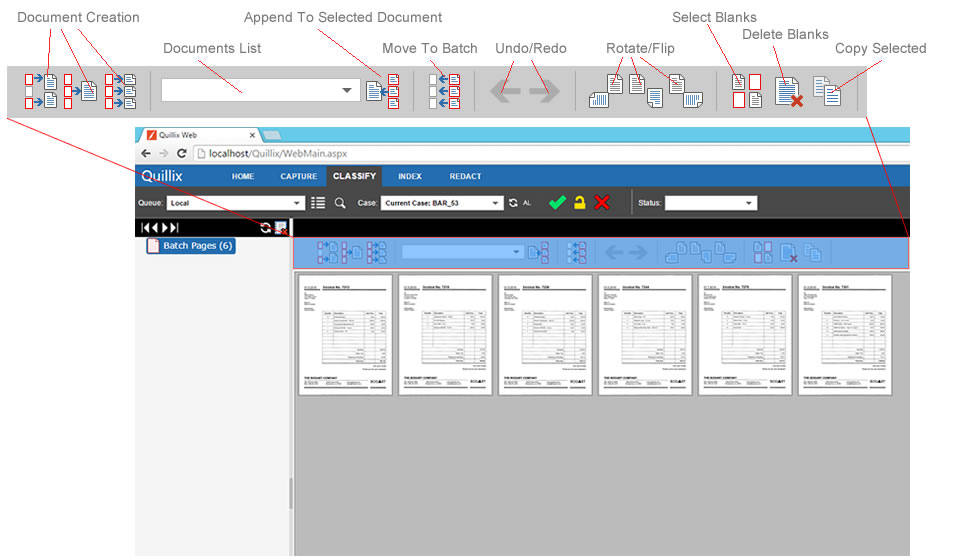
Figure 1 - Classify Toolbar
After a Quillix Batch has been created by scanning pages or importing files, batch pages are usually then grouped together as one or more documents. The resulting document pages may also be sorted into the proper page order, if appropriate. The Quillix Classify Panel provides an efficient means to organize un-indexed batch pages into documents and perform QC operations from thumbnail images.
The Classify Page Features are designed to work with Batch Cases, and as such are not available for Document-Level Cases.
The Classify Toolbar is located just above the thumbnail viewer in the Classify Panel, and provides tools for performing Classification functions.

Figure 1 - Classify Toolbar
Thumbnail Image Selection in the Classify Panel respects Windows methodology for selecting single and multiple items in a list view. Clicking on a thumbnail with no control keys pressed will select a single item in the thumbnail viewer pane. Clicking on multiple images with the Shift key pressed will multi-select a sequential range of thumbnails between the first and last clicked thumbnails. Clicking on multiple images with the Ctrl key pressed will multi-select a discreet set of images. Selected thumbnails are captioned with a number corresponding to the order in which they were selected. The number captioned on the selected thumbnails denotes the order in which the corresponding pages will be added to a document.

Figure 2 - Thumbnail Image Selection
The Classify Panel provides methods for quickly separating a batch into documents by selecting thumbnail images and creating documents using buttons on the Classify Toolbar. The Classify functions are explained in greater detail in the Classifying Documents topic.
In addition to performing batch separation, the Classify Panel can be used for other high-speed batch operations as follows:
Allows the user to append the selected pages to the selected document.
Allows the user to move the selected pages of a document back into the collection of un-indexed batch pages.
Allows the user to perform Quality Control operations such as rotate and flip using selected image thumbnails.
The Undo/Redo feature works by "remembering the last operation performed, or undone. By clicking the undo button after an operation, the operation will be undone, effectively returning the data back to its previous state before the operation was completed. In a similar manner, clicking the redo button following an undo operation will effectively redo the previously undone operation.
Quillix currently supports one level of Undo/Redo. The Quillix Client only remembers the last operation performed or undone.